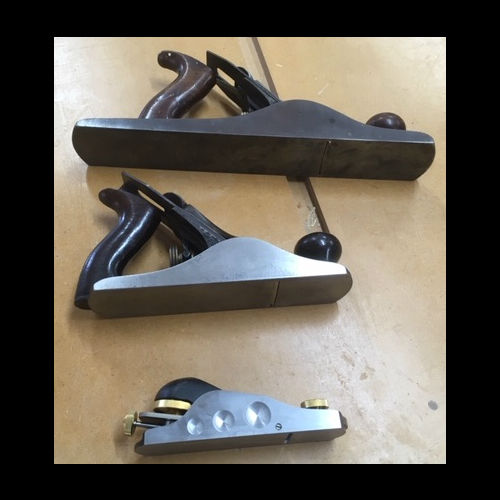12 Aug 2019 Hand Tools
Hits: 3836
 So I started looking into bench planes. There is no doubt high-quality new planes cost a lot of money, but they will likely last several life times, so it might be an investment worth making. I decided to start with some vintage Stanley planes from Ebay. Before I spent hundreds of dollars I wanted to make sure I could get a good plane set up precisely and learn to use it skillfully.
So I started looking into bench planes. There is no doubt high-quality new planes cost a lot of money, but they will likely last several life times, so it might be an investment worth making. I decided to start with some vintage Stanley planes from Ebay. Before I spent hundreds of dollars I wanted to make sure I could get a good plane set up precisely and learn to use it skillfully.
I discovered there’s a lot to learn about planes. After several weeks of studying, I decided on a just a few planes. From Ebay, I bought a Stanley #4, smoothing plane and a #5, jack plane, both Type 11 (it represents the time period when the plane was made. More on that in another post) and I ordered a new Veritas low-angle block plane--cost more than the Stanleys combined. I eventually want to add a #7 jointer plane. That should complete my set and meet my needs. Although I might like to try the #3 for smoothing since it might fit my small hands better than the #4. I might already have the bug.
I’m new to hand planes and might find that I don’t need all of these or I might need more, but this is my starting point. I’ll use the #5 for some rough clean up and flattening of jointed boards that didn’t quite line up perfectly. If everything glues up pretty well I’ll use the #7 to make sure the piece is flat, and then in both cases, I’ll move on to the #4 to prep for finish. If I need to after the #4, I can finish with a bit of scrapping or hand sanding with 220 grit. This is the goal!
I’ll also use the #7 to prep edges for jointing if there are some left over machine marks. And I’ll use the block plane for basic edging or adjusting sizes. Finally, I have a shoulder plane that I purchased several years ago. It is one of those hand tools I’ve actually used quite a bit. It is made for cleaning up joinery and it does it job wonderfully.
After I get the planes figured out I may move on to some hand saws and some higher quality chisels, but one step at a time.